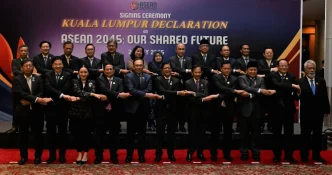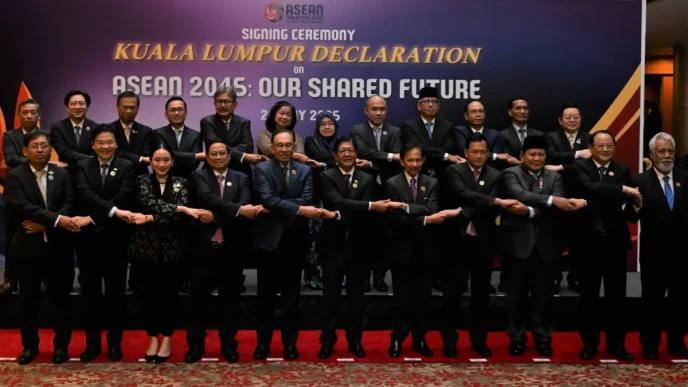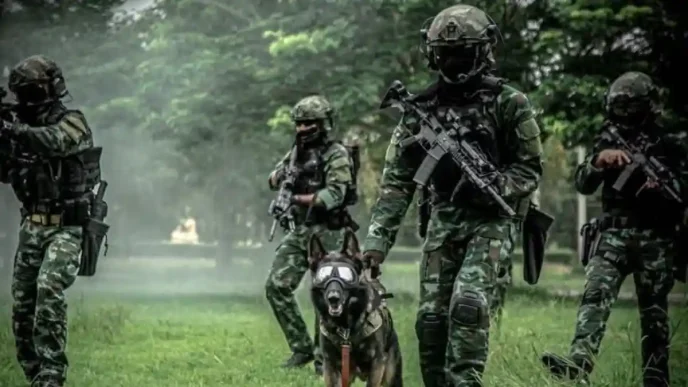In the wake of a border clash in May 2025, tensions between Cambodia and Thailand have spilled into cyberspace, with escalating cyberattacks and disinformation campaigns threatening not only bilateral relations but the broader stability of the Association of Southeast Asian Nations (ASEAN). As both nations grapple with digital warfare, concerns are mounting over the impact on regional cybersecurity cooperation and ASEAN’s ambitious plans for digital integration.
Rising Digital Hostilities
The border dispute, which erupted earlier this year, has evolved into a complex conflict extending beyond physical confrontations. Since June 2025, reports have emerged of sustained cyberattacks targeting critical infrastructure on both sides. Thai media outlets, including Nation Thailand, reported that Cambodian hackers, allegedly from a group known as AnonsecKh, launched Distributed Denial of Service (DDoS) attacks on Thai government, military, and private sector websites. These attacks, designed to overwhelm systems with excessive web requests—reportedly over 3,000 per second for 24 hours, in the case of Nation Thailand—have disrupted not only the targeted entities but also internet service provider infrastructure and other customers.
Cambodia, in turn, has accused Thai hackers, identified as “BlackEye-Thai” of targeting its governmental websites during the same period. Both nations have denied state involvement in these cyberattacks, with Cambodia rejecting claims of ties to North Korean hackers—a serious allegation raised by Thai sources—and instead accusing Thailand of attempting to tarnish its international reputation. The Cambodian government has reported similar DDoS attacks on its institutions, pointing to a cycle of digital retaliation that shows no signs of abating.
Amid these cyber skirmishes, disinformation has become a potent weapon. Thai authorities have issued warnings to citizens about fake news circulating online, including fabricated stories claiming Thailand is preparing to invade Cambodia or seize its territory. Cambodian officials have similarly cautioned against foreign-sourced misinformation, some of which allegedly uses artificial intelligence to impersonate national institutions and leaders. Social media platforms have amplified these falsehoods, with fake images circulating of Thai fighter jets bombing civilian areas and baseless accusations of chemical weapons use by Thailand—claims that prompted the Thai Ministry of Foreign Affairs to issue a statement on July 28, 2025, reaffirming its commitment to the Chemical Weapons Convention, to which it has been a signatory since 2003. The ministry denounced what it described as a “campaign of disinformation aiming to discredit Thailand’s reputation.”

Cybercrime and Eroding Trust
The digital conflict has also strained cross-border efforts to combat transnational cybercrime, particularly online scams that have plagued the region. In June 2025, Thai officials reported significant challenges in cooperating with Cambodia to investigate scam centers, citing a breakdown in communication due to heightened bilateral tensions. Thai investigations have pointed to the involvement of a Cambodian commercial entity, reportedly linked to influential political figures, in facilitating these operations. Cambodia has countered by accusing Thailand of providing electricity and internet access to border areas where scam hubs operate, further politicizing what was once a shared law enforcement priority.
On July 14, 2025, Thailand escalated the dispute by initiating legal action against a prominent Cambodian figure for alleged political interference via social media, a move that underscores how deeply cyberspace has become a battleground. This growing mistrust complicates not only bilateral relations but also the ability to distinguish between state-sponsored cyber activities and those carried out by independent, nationalistic hackers. While some analysts suggest that digital retaliation may serve as a pressure valve—allowing nationalist sentiments to be expressed without resorting to armed conflict—it risks normalizing cyberspace as a domain of warfare, with long-term consequences for trust and cooperation.
Regional Implications for ASEAN
The Cambodia-Thailand cyber conflict poses significant challenges to ASEAN’s vision of a digitally integrated and secure region. As the bloc prepares to launch the third iteration of its Cybersecurity Cooperation Strategy for 2026–2030, the current tensions highlight vulnerabilities in its framework for managing interstate disputes in the digital realm. ASEAN’s tradition of quiet diplomacy, while effective in maintaining surface-level harmony, has been criticized for its inability to address emerging threats like cyber warfare head-on.
One pressing concern is the impact on information sharing and cyber incident response within the ASEAN Regional Computer Emergency Response Team (CERT). Effective collaboration between member states is critical to managing cyber threats, yet the breakdown in bilateral cooperation on issues like online scams suggests that political tensions could undermine these mechanisms. If Cambodia and Thailand cannot align on basic cybersecurity protocols, the ripple effects may hinder region-wide efforts to build resilience against digital threats.
Equally troubling is the potential erosion of the 11 Norms of Responsible State Behavior in Cyberspace, a set of guidelines endorsed by ASEAN to foster a rules-based digital order. Adherence to these norms is essential to prevent cyber escalation, but it also limits options for digital retaliation—a double-edged sword for nations embroiled in conflict. If bilateral disputes lead to flagrant violations of these norms, it could set a dangerous precedent for other ASEAN members, weakening the bloc’s credibility as a unified entity in the global digital landscape.
At the military level, tensions between Cambodia and Thailand risk disrupting initiatives like the ASEAN Defence Ministers’ Meeting Plus (ADMM-Plus) Experts’ Working Group on Cybersecurity, currently co-chaired by Australia and Cambodia from 2024 to 2027. The agenda of this group, which focuses on building regional cyber defense capabilities, must remain insulated from bilateral disputes to maintain ASEAN’s cohesion. However, lingering mistrust between the two nations’ militaries could spill over into these forums, further complicating efforts to address shared security challenges.
A Test for ASEAN’s Cybersecurity Architecture
The cyber conflict between Cambodia and Thailand is a stark reminder of how quickly digital disputes can escalate, particularly when intertwined with sovereignty issues and military confrontations. If unresolved, this bilateral friction could herald a new era of open or covert cyber contestation among ASEAN member states, undermining the regional cybersecurity architecture at a time when digital integration is a cornerstone of economic development and resilience.
ASEAN faces a political conundrum: how to mediate between member states engaged in digital warfare without compromising its principle of non-interference. Upcoming meetings, such as the ASEAN Roundtable on Digital Defence hosted by Singapore and the ASEAN Cyber Defence Network Meeting hosted by Malaysia, will test the bloc’s ability to navigate these tensions. Interactions between Cambodian and Thai officials at these events will be closely watched for signs of reconciliation or further discord.
Beyond immediate diplomatic efforts, ASEAN must also grapple with the broader implications of cyberspace as a domain of conflict. The current crisis underscores the need for stronger mechanisms to address cyber disputes, whether through enhanced dialogue, clearer norms, or dedicated mediation channels. Without such measures, the bloc risks seeing its digital ambitions—vital for economic growth and global competitiveness—derailed by interstate rivalries.
As Cambodia and Thailand continue their digital duel, the stakes for ASEAN could not be higher. The outcome of this conflict may well shape the future of regional cybersecurity cooperation, determining whether the bloc can adapt to the challenges of the digital age or succumb to the divisions of the past.
















